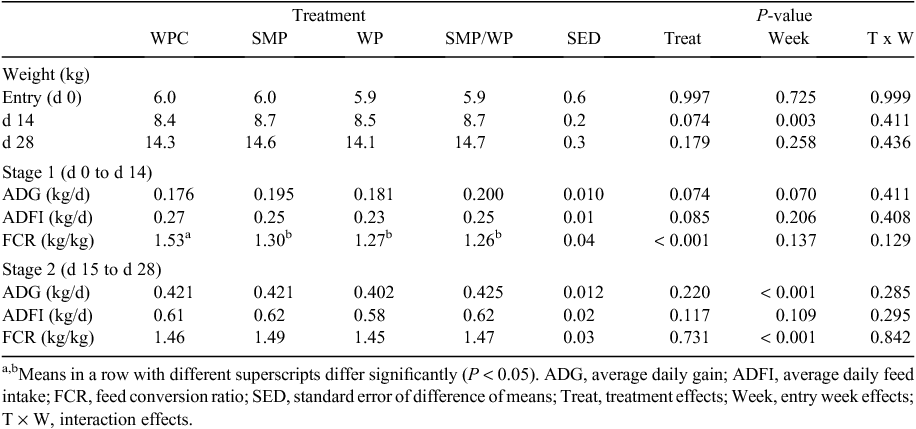Alternative milk derivatives do not reduce weaner pig performance
R. J. E. Hewitt A C , S. M. Tritton A , D. N. D’Souza A and R. J. van Barneveld BA SunPork Solutions, Loganholme, QLD 4129.
B SunPork Group, Murarrie, QLD 4172.
C Corresponding author. Email: robert.hewitt@sunporkfarms.com.au
Animal Production Science 57(12) 2431-2431 https://doi.org/10.1071/ANv57n12Ab121
Published: 20 November 2017
The inclusion of dried milk derivatives (DMD) in diets of newly weaned pigs has been shown to have beneficial effects (Cromwell et al. 2008), providing a highly digestible source of nutrients. Improvements in performance are associated with both their high quality protein fractions (Tokach et al. 1989) but more specifically their lactose content (Mahan 1992). Whey, both liquid and dried, has been widely used in pig production; however, expansion in the use of DMD for human nutrition has seen an increased offering for pig nutrition. The aim of this study was to evaluate a range of DMD available for inclusion in weaner diets, with the null hypothesis that there would be no difference in growth performance between DMD treatments.
Five hundred and sixty male pigs (20 days of age, 5.92 ± 0.16 kg) entered the experiment over a 4-week period, were sorted by size and assigned to pens (n = 14). Pigs within each pen were weighed and allocated to one of four treatments using a randomised block design, resulting in 10 replicates per treatment, with pen as the replicate. Treatments consisted of isoenergetic and isonitrogenous first stage weaner diets (15.0 MJ DE/kg, 0.9 g standardised ileal digestible lysine (SID L)/MJ DE) including either 13% whey protein concentrate (WPC), 13% skim milk powder (SMP), 13% whey powder (WP) or a mix of 6.5% SMP and 6.5% WP fed for the first 14 days post-weaning. All treatments received the same second stage weaner diet (14.8 MJ DE/kg, 0.85 g SID L/MJ DE) from d 15 to d 28 post-weaning. Data were analysed by ANOVA with treatment as a fixed factor, entry week as blocking factor and entry weight as a covariate (Genstat 18, VSN International, Hemel Hempstead, UK), with pairwise differences between treatments determined by l.s.d. (P < 0.05).
Inclusion of different DMD did not influence the weight gain of pigs in the period immediately post-weaning, nor the growth performance in the second stage (Table 1). The inclusion of WPC did significantly decrease feed efficiency in the first stage (P < 0.001), but there was no difference in the second stage.
Results suggest these products are all suitable for use in weaner diets; however, their use may be largely based on economics.
References
Cromwell GL, Allee GL, Mahan DC (2008) Journal of Animal Science 86, 127–133.| Crossref | GoogleScholarGoogle Scholar |
Mahan DC (1992) Journal of Animal Science 70, 2182–2187.
| Crossref | GoogleScholarGoogle Scholar |
Tokach MD, Nelssen JL, Allee GL (1989) Journal of Animal Science 67, 1307–1312.
| Crossref | GoogleScholarGoogle Scholar |



